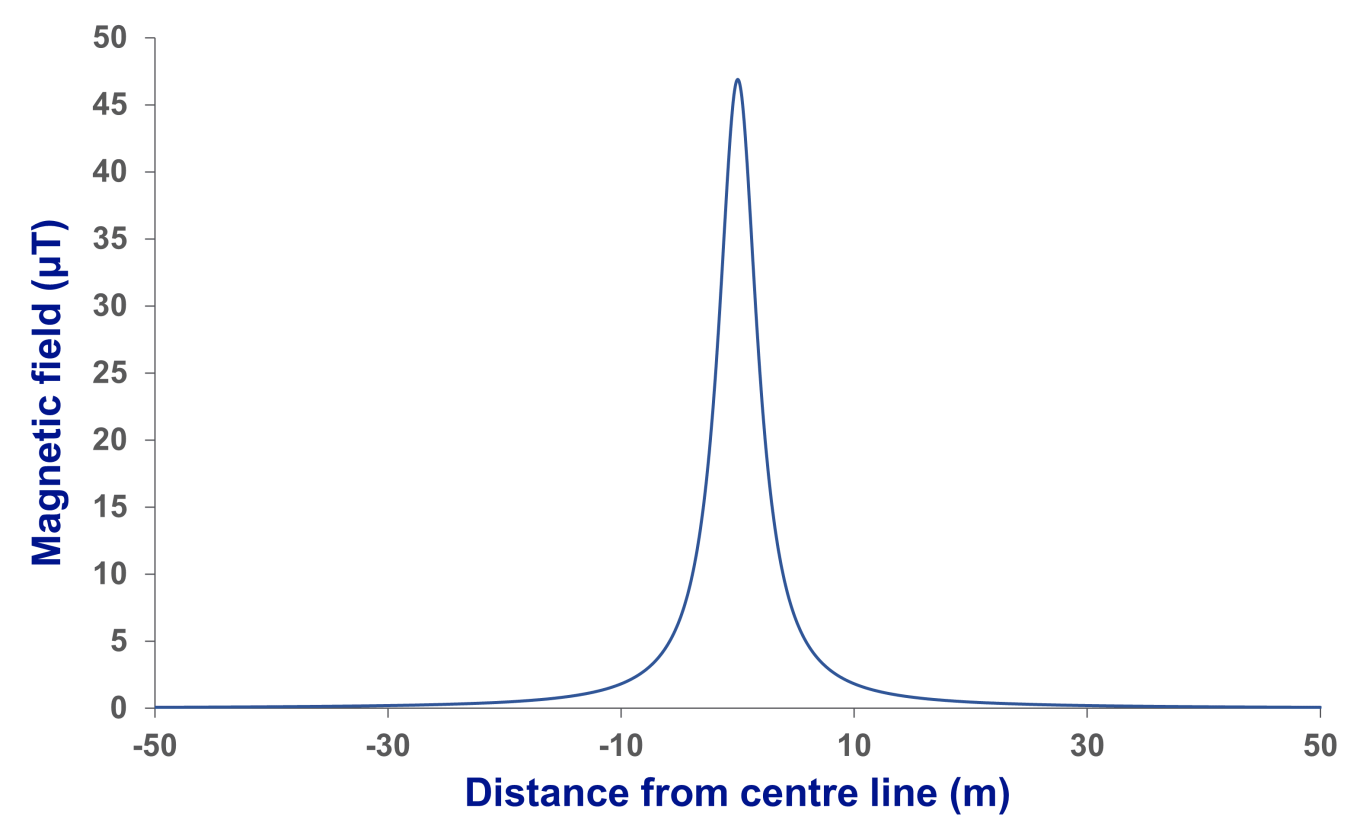Fields from underground DC cables
Electric and magnetic fields (EMFs) are produced wherever electricity is used. A key characteristic of EMFs is their frequency. They always have the same frequency as the electricity that produced them. Most electricity supply in the UK is alternating current (AC) with a frequency of 50 cycles per second or 50 hertz (Hz). So, the EMFs it produces also alternate or change direction with a frequency of 50 Hz.
Interconnectors and some offshore high voltage direct current (HVDC) transmission links are different; they use direct current (DC), so they will produce steady EMFs that always point in the same direction. These cables are buried underground and are covered in a metal sheath, which screens the electric field altogether. So, the only field that would be produced by these cables is a DC magnetic field. These DC cables often transmit power over long distances or between different countries.
The convertor stations, which convert AC to DC power or the reverse, will produce both AC and DC EMFs. The EMFs from the equipment inside a convertor station do not extend much, if at all beyond the perimeter fence - the field outside the perimeter comes from the cables entering or leaving the substation.
AC and DC EMFs have different effects; therefore, each has a separate and distinct set of exposure guidelines. (A different set of EMFs again are produced by radiofrequency electricity such as TV, radio and mobile communications – these have frequencies of typically hundreds of millions of Hz). Lots of information is provided about AC fields on this website. This page covers DC EMFs specifically.
DC Cables: The Earth’s field and the field from DC cables
The Earth has its own natural DC magnetic field (or geomagnetic field). In the UK this is around 50 microtesla (µT) but it varies slightly with geographic location. The Earth’s magnetic field is always present, and it is this field that compasses respond to.
The magnetic field that a DC cable produces depends on the current it is carrying at any one time and the cable design. These calculations are for a typical design of cable such as would be used in the UK to connect an undersea cable to a convertor station. This design has two cores, spaced 0.5 metres apart, 1 metre deep, carrying 2000 A at +/- 500 kV. The maximum magnetic field the cables could produce operating at maximum capability is approximately 50 µT at 1 metre above ground. This decreases rapidly to the sides of the cable, as shown.


This field combines with the Earth’s static magnetic field. How the two fields combine depends on the relative direction of the fields, which in turn depends on the direction of the cable. The adjacent graph is for the cable running north-south which produces the maximum possible combination of fields:
What effects do DC fields have?
Because the field from the cable alters the Earth’s magnetic field, there is an effect on magnetic compasses when they are close to the cable – they can point in the wrong direction. This very rarely causes problems in practice, mainly because the effect is localised – it is only within approximately 10 metres of the cable itself.
The exposure guideline for the public in the UK (which is set by the International Commission on Non-Ionizing Radiation Protection) for DC magnetic fields is 40,000 µT, and even that can be safely exceeded, for example in MRI machines which expose people to millions of µT. These fields are thousands of times greater than the 50 µT produced by a cable. At the levels found near MRI machines, the field can also create a hazard by propelling magnetic objects through the air, but again, the fields produced by power cables are nowhere near big enough to do this.
The evidence that leads to some health concerns about EMFs from electric power systems is specific to AC fields, at 50 Hz, and does not apply to DC fields. The fact that we have evolved in the Earth’s DC magnetic field makes it unlikely that there are any adverse health effects from any sources of fields at these levels. The available evidence from epidemiological studies of humans and animals has been reviewed by the UK’s Health Protection Agency and internationally by the World Health Organization and the International Agency for Research on Cancer. None of these expert bodies has identified any health risk for humans or animals.